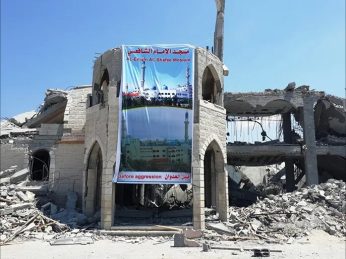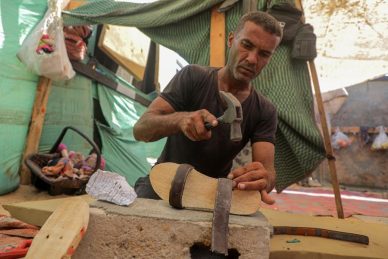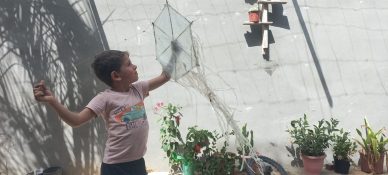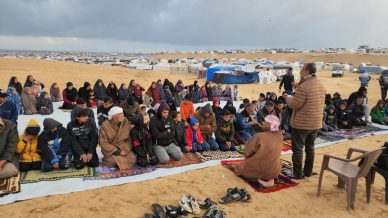Al-Muwarraq Castle in al-Khalil province is a historical landmark and a national symbol telling stories of battles and the Palestinian people’s struggle against colonialism and their rejection of injustice since ancient times.
To the west of Dura town in southern al-Khalil al-Muwarraq village is 10 kilometers away. It is famous for its unique archaeological castle that was built in the Roman era and later used by Palestinian revolutionaries as a stronghold to launch attacks against the colonial power and free the land from its clutches and oppression Palestinian historian Mohamed Abu Saleh told the Palestinian Information Center (PIC).
Abu Saleh said the castle was divided into two sections one in the north and the other in the south with an atrium connecting them. Some of its remains including rooms small water canals and man-made caves reflect how the imposing place has looked like in the past.
There is a wall or what is left of it encircling the castle’s premises. This type of structure was built during the reign of Edos king of the Arab Edomites who also constructed other Roman castles and fortresses in different areas of Palestine.
Israeli violations
On March 31 2017 Jewish settlers infiltrated under military escort into the archaeological site and performed rituals at the pretext that the Jewish people have links to the history of the castle.
Ahmed al-Rajoub director of the Palestinian ministry of tourism and antiquities in the southern West Bank told the PIC that Jewish settlers repeatedly broke into the site to perform rituals in order to pave the way for claiming it as a Jewish shrine.
Rajoub affirmed that the Israeli and Zionist propaganda tries to focus on certain periods of the Palestinian history with the aim of attaching Israel to that history adding that the Zionist Jews lack identity and try to create a false one for themselves through stealing the Palestinian heritage.
Roman history
The castle dates back to the early Roman times where it used to be an administrative center before it was destroyed by Palestinian revolutionists in 68 AD during their first uprising against the Romans.
“Its destruction came at a time when it was considered a symbol of resistance against the Roman colonialism and part of an ancient political history” Rajoub noted.
He added that what remained of the castle was utilized later by revolutionists during the second Palestinian uprising against the Romans between 132 and 135 AD.
“The Jews are trying hard to attach this uprising to themselves and claim they have started it calling it a Jewish revolution. However it was a purely Palestinian revolution” the Palestinian official said accusing Israel of falsifying facts as part of its schemes to control the Palestinian land its history and antiquities.
As for any plan to protect the castle he asserted that the Palestinian ministries of tourism and environment intend to organize events at the site and trips to it.
There are also efforts to develop the castle and prepare it to be a Palestinian archaeological park that reflects an important part of the country’s heritage he said.














